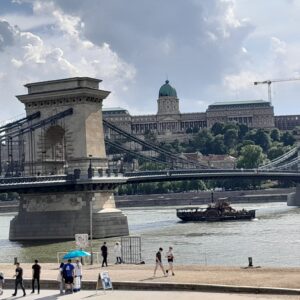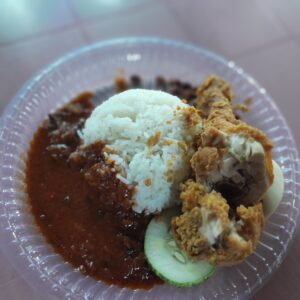Update 2019 Learned a bit of a harsh lesson in Bali. The day after I arrived, I tried at 3 different ATMs to withdraw money. First one (Permata) gave a rather vague message about ATM fees so I cancelled. Second one (commonwealth) said my card had expired (not true). Third one was a CIMB in a convenience store (I recommend below to use only ATMs attached to a bank!) This one said something about card expired…..then it kept the card! I went into a CIMB branch the next business day and they said ALL cards kept by their ATMs are destroyed. What I learned? 1. Don’t break the rule of using only ATMs attached to bank. This would have saved me the special trip to the bank branch only to find out my card was gone forever. 2. CIMB policy is to destroy all cards retained, likely other banks too. I have heard with Mandiri bank there is a hope to get your card back.
Cash is king when traveling in SE Asia, especially when you travel more remote areas. I have used ATMs a lot in my travels and here are a few good lessons I have learned along the way. As my home bank charges me a flat fee for each international withdrawal, I try and find which ATM’s will give the maximum amount in a single transaction. Note that generally ATMs can only dispense a maximum of 30 bills at a time. In some countries taking the maximum is still only good to cover a few days expenses, in which case, carrying some $US or other widely accepted currency for exchange may be a better option. Something to look out for on most ATMs, once you enter the amount you want in local currency, you will be given a corresponding amount in your currency and asked if you want to make the transaction with or without their currency conversion. Don’t ever go for their conversion, it’s a trap! Leave the currency conversion to your trusted home bank. In 10 out of 10 cases, I checked afterwards and was always money ahead not taking their conversion, sometimes as much as $8 saved. If you are traveling to more remote areas, be sure to stock up on local cash before you go.
Update 2018 – It occurred to me after writing this that to figure the real difference between an ATM withdrawal and using cash at a money changer, I should do an ATM withdrawal and compare the money change rate for that day. I did this in Malaysia, withdrawing close to my withdrawal limit. I tallied everything up and was surprised just how much better the money changer transaction would be, almost 2% better. If I take the fee charged by my bank out of the equation, it is still 1.3% better rate with money changer. Keep in mind this is in a country that does not have a fixed ATM fee for foreign withdrawals, which would make things even worse.
Physically, I always try look for an ATM attached to a bank whenever possible. They are generally well-stocked, less likely to be fitted with skimming devices, have better security and if by some bad luck your card is swallowed by the machine, I feel there is a better chance of getting the card back if you can just go into the attached bank, point to the machine and give your best sad-faced explanation. Regardless of where the ATM is, I will always give it a good once over before I use it, pull on the slot where you insert the card and make sure it is well attached and look for anything that looks out of the ordinary. The ATM’s will usually display which networks they are connected to such as Plus, Maestro, etc. Make sure it matches your card.
(update 2018, now 220 baht ATM fee….outrageous)
Thailand is one country that I recommend you bring cash to exchange rather than using the ATM. Why is that? Well the Thai banks have the record, in my travels at least, for the most expensive ATM withdrawal fee. The fees are ever-rising and on my last trip(2017) it was a shocking 200 baht (about $6 USD). This, of course, is in addition to the fee your own bank charges. As a side note, I am a frequent traveler there and heard that it was relatively easy for foreigners to set up an account with ATM card at banks such as Bangkok Bank. I checked it out and apparently that ship has sailed. Now you would need to go to the immigration office and get a letter of reference for the bank, more hassle than it is worth for the average traveler.There are many good money changers, Super Rich in Chiang Mai is my favourite. If you do still want to use an ATM, they are plentiful. Bangkok Bank is a favourite.
In Malaysia, the local banks do not charge a withdrawal fee, excellent! You may have to search around for machines that dispense 100 MYR notes up to a maximum 3000 MYR. One thing to note is that some of the ATMs ask if you want to make the transaction with or without their currency conversation. Make sure to select continue without conversion. Maybank and CIMB are 2 of my favourites.
In Indonesia, the good news is the local banks generally don’t charge a fee for ATM withdrawals. The not so good news is that the largest bill dispensed is 100,000 (if you can find it), making for a maximum withdrawal of 3,000,000 rupiah. This may sound like a lot of money but actually is only about $225 USD. This is another country where you may want to bring cash for exchange as your first choice. If you are going anywhere remote, the ATMs are few and far between so get local cash before you go. Maybank and CIMB are 2 of my favourite ATMs here. BNI ATMs are ubiquitous and work well but I believe the max is only around 2,000,000.
Vietnam ATMs charge a nominal withdrawal fee starting around 30,000 VND. What can be more of a challenge is to find one that gives out a decent amount. I did find a Citibank ATM in Ho Chi Minh that gave 8,000,0000 VND. It is easy to exchange US cash most places.
Laos is another country where it is difficult to find an ATM that gives a substantial amount of cash. BCEL ATMs are ubiquitous and the fee is only 20,000 kip per withdrawal however the limit is only 1,500,000 kip (less than $200 USD). ANZ bank in Vientiane allows a maximum 2,000,000 withdrawal however they charge a hefty 40,000 kip fee per transaction. Cash is definitely king in Laos and both USD and Thai baht are widely accepted. Jewelry stores often give the best exchange rate.
CONCLUSION
When I first started traveling in Southeast Asia about a decade ago, my default was to use an ATM for almost 100% of my cash requirements. Now I have learned that bringing cash and using money changers can be preferable option a lot of the time, especially in countries like Thailand that have outrageous ATM fees.
If you do decide to use an ATM, choose it wisely. Obviously it has to be one that is connected to your bank network and if at all possible try find one attached to a bank. Before you start transacting, give the machine a good once over looking for anything suspicious like a skimming device. If you have a problem with the transaction, don’t try repeatedly, better to contact your bank to see what is up. If your transaction fails you can also try clean the card, this saved the day for me.
Please feel free to comment with updates or other ATM/cash tips you may have. Happy Travels.







